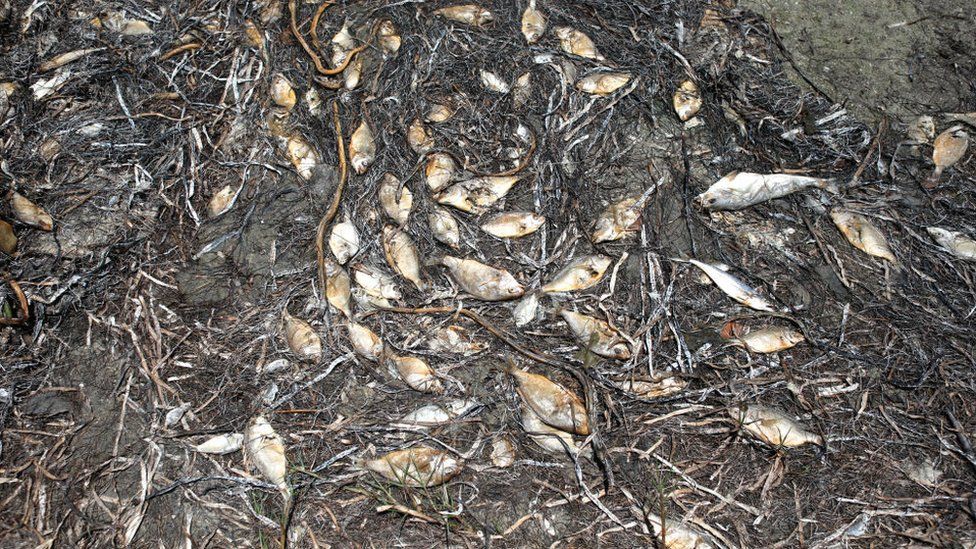ARTICLE AD BOX
 Image source, Getty Images
Image source, Getty Images
By Madeline Halpert
BBC News, New York
Destructive algae have returned to Florida's coastline, littering some of the state's beaches with dead fish and burning the throats of beachgoers.
Red tide, as it is known, poses a perennial problem for parts of Texas and Florida in the summer and autumn seasons.
The phenomenon has occurred since the 1800s.
But Florida wildlife experts say the algae has made an early arrival this year at higher-than-normal levels.
The red tide is seen in offshore waters when there are high amounts of algae known as Karenia brevis, which produce brevetoxins that can kill marine life.
The accumulation of the algae can also form blooms that turn the water reddish-brown.
Last week, the Florida Fish and Wildlife Conservation Commission said the organism was found in 115 samples along the state's west coast, including in the popular vacation spots of Charlotte, Collier, Lee, Manatee, Pinellas and Sarasota counties.
In 56 of the samples, medium to high concentrations of the algae were found, posing risks not only to marine life but also human health, including skin irritation and breathing problems.
On the white powder beaches of Siesta Key off the coast of Sarasota, Florida, for instance, hundreds of dead fish big and small have washed up along miles of coastline, where beachgoers frequently cough and rub burning eyes.
The bloom can be particularly dangerous for people with respiratory problems like asthma, who experts say should avoid beaches with moderate to high red tide levels.
When brevetoxins accumulate in shellfish such as clams and oysters, they can also cause food poisoning when consumed.
This March is not Florida's worst encounter with red tide; between 2017 and 2018, the state saw one of its deadliest outbreaks, which killed 2,000 tonnes of marine life.
Although red tide occurs naturally, scientists say climate change can worsen the problem.
Category 4 Hurricane Ian - which slammed south-western Florida last September - may also have exacerbated red tide as waste and nutrients from farm farm fields got into waterways.
According to Florida's Fish and Wildlife Conservation Commission, there is currently "no practical and acceptable way to control or kill red tide blooms".

 1 year ago
27
1 year ago
27








 English (US)
English (US)